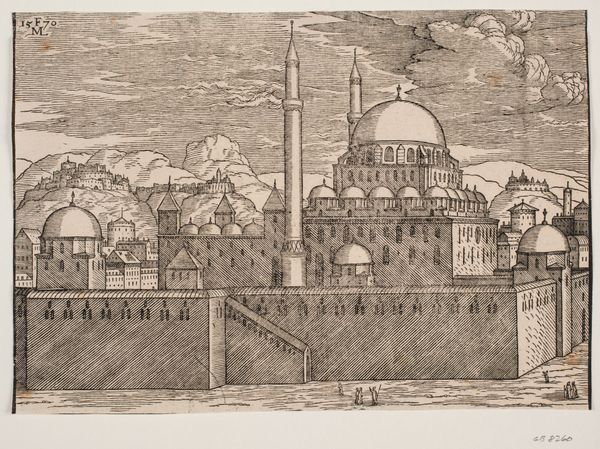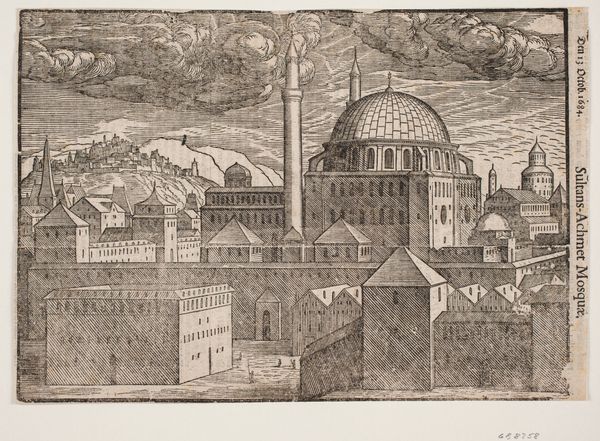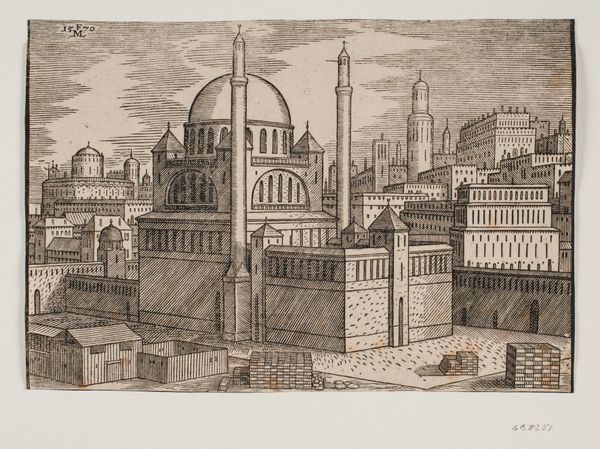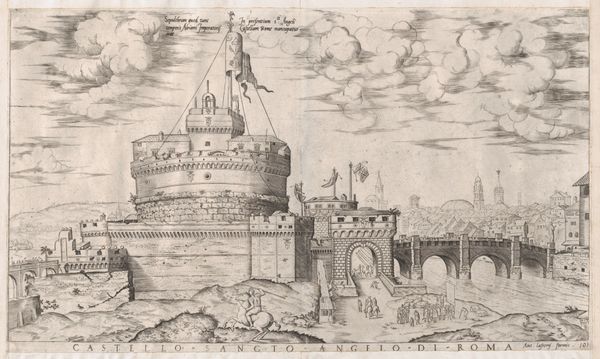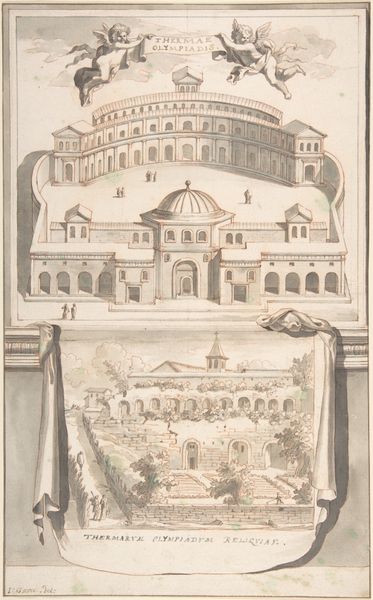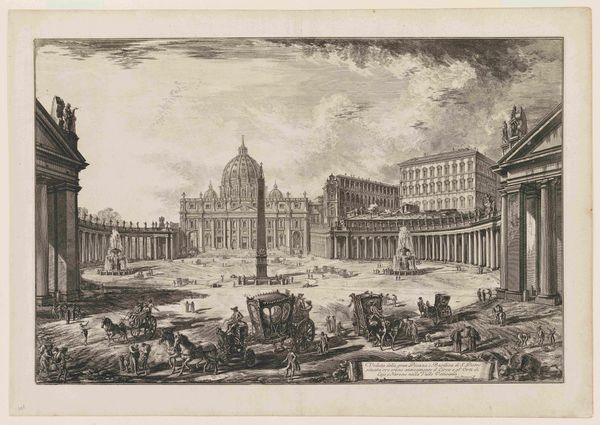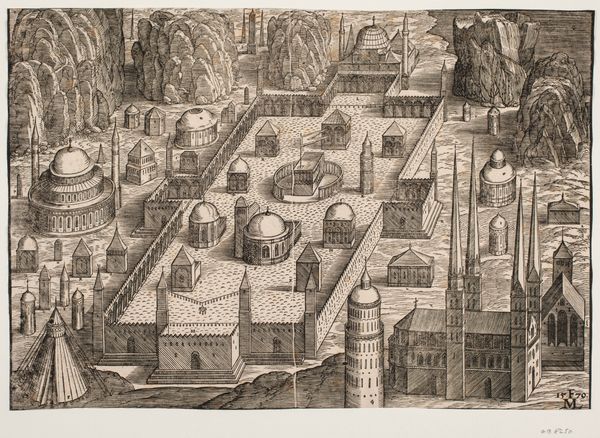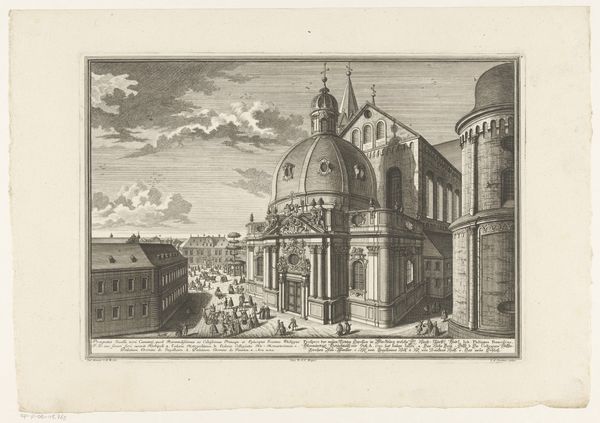
Mosque, with two minarets, as seen from the nortwest; on the other side of the water, Galata can be seen? In the lower right corner, there is a cubically formed stone, upon which a square geometric figure has been etched, a figure that presumably displays the mosque's ground plan 1570
0:00
0:00
print, etching, ink, woodcut
#
ink drawing
# print
#
etching
#
landscape
#
etching
#
ink
#
geometric
#
woodcut
#
cityscape
#
islamic-art
Dimensions: 175 mm (height) x 253 mm (width) (bladmaal)
This woodcut, made by Melchior Lorck around 1570, depicts a mosque with slender minarets rising towards the heavens. The minaret, far more than a mere architectural feature, functions as a potent symbol, a visual echo of the 'axis mundi,' connecting the earthly and divine realms. Consider the Tower of Babel, a monument of human ambition, or even the obelisks of ancient Egypt. These structures, like the minaret, strive to bridge the gap between humanity and the cosmos. This yearning for connection is deeply ingrained in the human psyche. Over time, such motifs have undergone a fascinating metamorphosis. In the Renaissance, we see the rise of bell towers in Christian churches, mirroring this upward trajectory. It is as if the collective unconscious seeks to reassert this connection, regardless of creed or culture. We are drawn to these images because they speak to a profound, primal desire to transcend our mortal limitations.
Comments
No comments
Be the first to comment and join the conversation on the ultimate creative platform.

